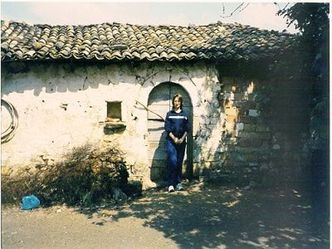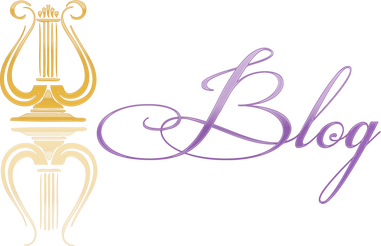 CHRISTINE CONFRONTS HER PAST “Aunt Dimitra, who had again transformed into a sweet, elderly lady with saggy breasts and grey bun, grinned at her and walked over to a building that was old and small and covered in hay and dirt. It was not more than two metres in height, and the whitewashed walls were crumbling, revealing old bricks of different shades and stones that had been haphazardly put together many years ago. Christine was intrigued by this small building. She wandered around its remains, ogling its decrepit wooden door, dirty white walls, jagged brown tiled roof, and crumbling façade. The building stood in the radiant sun, a memorial to the poverty of her forefathers. ‘This is where your mum was born, and this is where she was brought up,’ her aunt said, beaming with pride and excitement. Christine stared wide-eyed at the ‘house’, and was dismayed by the poverty of the place. She went closer and peeked through a miniature window smeared with dirt. She imagined her mother getting dressed and preparing herself for the day ahead. The house was tiny both in width and in height—the doorway barely allowing children to walk through. There were no rooms—indeed, the ‘house’ itself was the size of a room. Christine tried to imagine her mum as a small girl growing up into a young woman in such unbearable surroundings—and with all her brothers and sisters in such close range. The thought suffocated Christine, who valued her space, her freedom. ‘And this is the kitchen—and where Grandma and Grandpa slept.’ Her aunt stood in front of a rundown red brick house that stood opposite, its white paint completely peeled away—the home of her grandmother and grandfather. Christine could not grasp the wretched poverty of her forefathers, and walked into the small house. It had enough room for the oven and a bed. The house now covered in black soot, Christine tried to discern where and how her grandparents had spent the night. She spied a small space in the corner of dirt and hay and came to the realisation that it was from that spot that her mother had come into existence. Her thoughts went to her grandma, with her short round body, her round face and round eyes—laughing crudely yet joyously—and beyond that to her foremothers, slaving away at the little stone oven on a hot day like today, baking the life-giving bread that had sustained peasants for centuries. Cooking the lentil soup and preparing the olives that made the Mediterranean diet famous for its nutritious, life-nourishing qualities. The entire lot and the buildings had been abandoned years ago and left to disintegrate forever; corpses to be buried and forgotten; a cursed reminder of peasant drudgery and the dehumanisation that is poverty. ‘I don’t know what to say, Aunty. So much poverty . . . I can’t believe it . . .’ (Yet) as long as people remained in the village, as long as her ancestors came back to pay homage, the old house of the Giannopoulos family would stand—because once it fell, the village would be gone physically, culturally and spiritually. And nothing would be left to tell of their stories.” (Excerpt: Daughter of Odysseus - Ithaka Calling, Part 3, Chapter 11)
0 Comments
THE POWER OF SYMBOLS
‘Signs and symbols rule the world, Not Words nor Laws.’ Confucius I found this quote fascinating from the moment I stumbled upon it. That symbols and signs can evoke such powerful reactions illustrates the depth of their importance. That they rule the world is quite profound but I think there is an element of truth in this. I think of the swastika or the sickle and hammer – symbols that represent to most totalitarian control and terrible evil. Yet for the Hindus, the swastika is a good luck charm – the second most sacred symbol in Hinduism. The Cross is the ultimate symbol of death, suffering and sacrifice. Yet for Christians, it is also a symbol of hope and new beginnings. No words are needed to convey this. This most simple of symbols – two pieces of wood – convey a message that ended up changing the world. When I see a rainbow, I am reminded of the story of Noah. I think that there is always hope despite the storms. I find the fig a most erotic of fruits and can understand why they have become a symbol of sexual desire! Symbols can mean many things to many people however. A forest in the western tradition has been associated with something dark and sinister, an abode of strange creatures. I think of the Forbidden Forest in Harry Potter. Yet for others, the forest is a symbol of the unity that is to be achieved with their deity. The dolphin was linked to the ancient Greek goddess of love, Aphrodite, and was seen as the messenger of love. Yet for the early Christians, the Dolphin became the symbol of how the church guided the Christians towards Christ. Even the humble ladybug has been imbued with layers upon layers of symbolic meaning; an unlikely love symbol, Asian traditions teach that the ladybug has the potential to lead you to your destined one. Of course, there are those symbols that are universal. Water as a symbol of cleansing and regeneration; the earth as symbolic of the feminine, the butterfly as symbolic of new beginnings and transformations. We always seek symbols to explain what is essentially a mystery. Life is a mystery, the world around us is a mystery yet we are intrinsically connected to this mysterious world. As an avid reader and novelist, I appreciate the power of images to create pictures in our minds, and the importance of symbols to enhance themes and help explain deep mysteries and meanings that mere words cannot always explain. Most would have heard of the Sirens, seductive mermaids that tried to lure the great adventurer Odysseus thousands of years ago. Hear the word Siren today, and you know they have come to symbolise feminine temptation that can ensnare a man. Ithaka, the island home of Odysseus, has come to symbolise the journey of life with all its trials and temptations, and this idea has been beautifully captured by the poet Cavafy in his poem Ithaka. The symbols associated with weddings and christenings are rich and varied. After all, love is central to life. It unites man and woman, thereby providing the foundation of our civilization. The force that is love also leads many to religion where they seek a union with God – the Living Flame of Fire (the divine itself associated with ‘fire’ across all cultures). Religious rites have been with us since time immemorial. Baptism, the most common religious rite in the Western World, uses the cleansing power of water (and in the Orthodox tradition, oil) to symbolise a rebirth – a new life in Christ. In fact, water is the most ancient of religious symbols and it is no coincidence that water is connected to purity, creation and life eternal in many religions. We are surrounded by symbols. We are surrounded by our ancestor’s desire to find meaning and truth and beauty. It is our task to understand this and continue their stories. |
To find out more about me, go to 'About'. You can also follow me on Facebook: Archives
December 2022
Categories |

 RSS Feed
RSS Feed